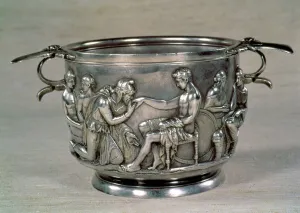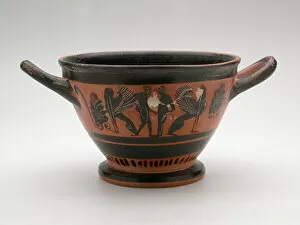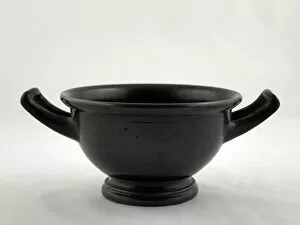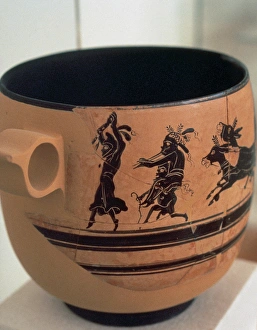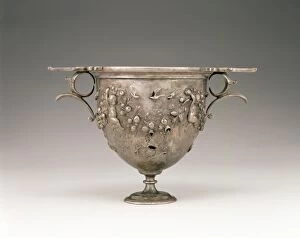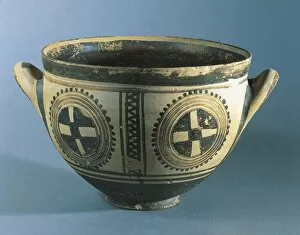Skyphos Collection
The skyphos, a type of drinking cup, has been an enduring symbol of ancient Greek and Roman culture
All Professionally Made to Order for Quick Shipping
The skyphos, a type of drinking cup, has been an enduring symbol of ancient Greek and Roman culture. Dating back to the 5th century BC, these ceramic vessels were intricately decorated with scenes that offer glimpses into the lives of those who used them. One such example is an Attic red-figure cup-skyphos from around 520-500 BC. Adorned with two naked youths kneeling by a column-crater, it showcases the artistic prowess and attention to detail prevalent during this period. Another notable skyphos is one created by CHC Group in approximately 500-480 BCE. This particular piece exemplifies the craftsmanship of its creator and serves as a testament to their skill in pottery-making. Dating slightly later, a skyphos from 410-400 BCE captures our imagination despite its unknown creator. Its design remains captivating even after centuries have passed since its creation. Not limited to Greece alone, an Attic black gloss pottery cup discovered in a female grave at Nymphaeum offers insight into burial customs and rituals practiced during ancient times. Moving beyond ceramics, we encounter a Roman silver-gilt drinking cup depicting King Priam of Troy appealing to Achilles for mercy. This exquisite piece highlights the influence of mythology on artistry during this era. The painter of Thelemacus brings us another stunning example through an Attic skyphos portraying Penelope and Telemachus. The intricate detailing on this vessel transports us back to ancient Greece's epic tales and legends. Transitioning from clay to precious metals, we find ourselves captivated by silver skyphoi dating back to late 1st century BC - early 1st century AD. These luxurious cups showcase both opulence and refinement in their design. A silver mug discovered at Dalboki in Bulgaria adds further diversity to our understanding of these vessels' distribution across different regions during antiquity.

